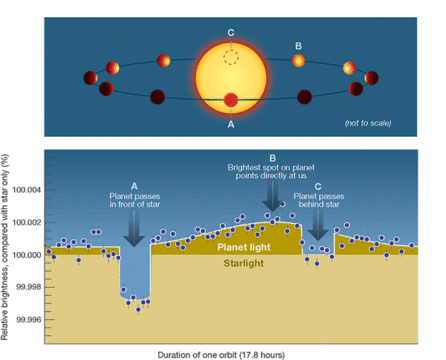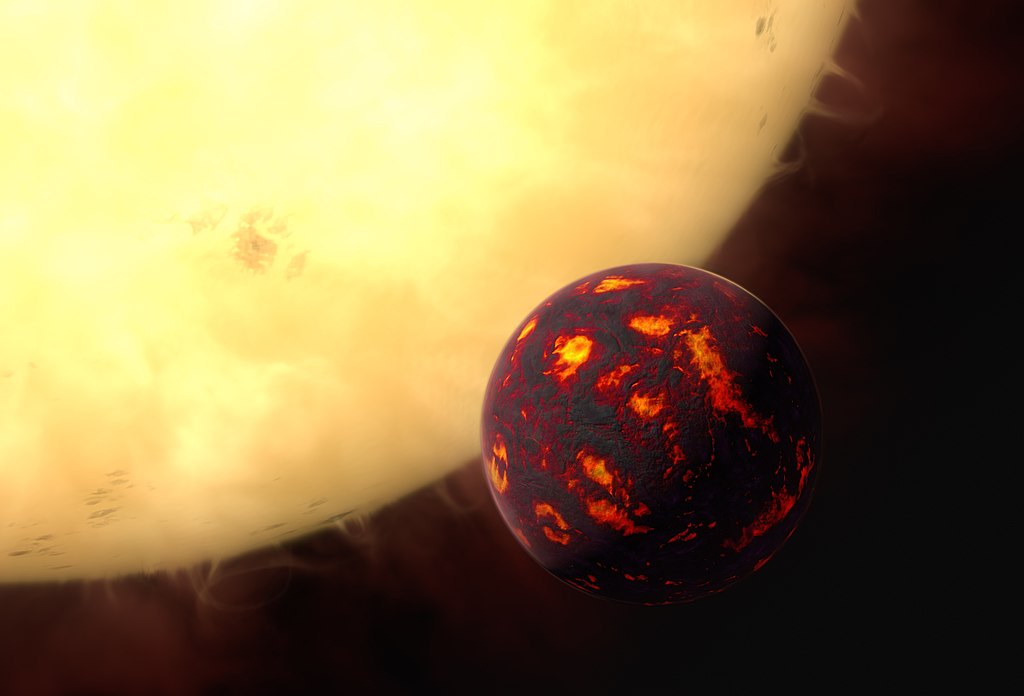New data from the James Webb Space Telescope may indicate that the super-hot planet 55 Cancri e has a thick atmosphere, perhaps supported by the planet's magma ocean.
The hot super-Earth, 55 Cancri e, which orbits its yellow-orange star every 17 hours, has intrigued astronomers since its discovery in 2004. New data from the James Webb Space Telescope cast doubt on early theories and offer potential evidence that a hot world It may be surrounded by a thick atmosphere.
According to the first ideas formulated about the planet and its star composition, the planet is a diamond planet. Astronomers thought so until they learned more about the two celestial bodies: the new theory was that the exoplanet was not a cold, shiny diamond, but rather its surface glowed with lava flows, its magma ocean covered only by a breath of steaming rock. .
Two observations led to the above conclusion. Observations of the planet's mass and radius indicate that it is a dense world that cannot form a thick envelope of gas due to the extreme temperature difference between its day and night sides, as revealed by the Spitzer Space Telescope.

Meanwhile, an infrared map of the planet's day side showed that the brightest point on the surface is shifting in an east-west direction, that is, it is not directly in the direction of the star. Something is rearranging the distribution of heat on the planet, and astronomers say lava flows are to blame.
The mass, radius, temperature, and composition of the planet's atmosphere are still a matter of debate, so we don't know for sure whether it has an atmosphere at all.
The James Webb Space Telescope is a promising tool to solve this problem, but at the moment it is still debated what the data it provides indicate.
Renew Ho (NASA JPL) and his colleagues asked the Webb mission team to record the planet's daytime and nighttime thermal radiation spectrum. These observations can be made by taking measurements of the planet as it orbits the star. The researchers presented the results at the American Astronomical Society meeting in New Orleans. (The study itself is still under peer review.)
During his presentation, he acknowledged that analyzing the data was not a simple task. Firstly, 55 Kankri is a bright star. Barely visible to the naked eye even in a clear, dark sky, the sixth-magnitude star is too bright for Webb's sensitive instruments. In addition, the data were noisy. “These datasets turn out to be more difficult than other James Webb Space Telescope datasets, at least the ones I've encountered so far.” He said.
The researchers did not give up and concluded that the recorded spectra indicated the presence of a thick gaseous envelope around the planet. This atmosphere may consist of carbon monoxide or carbon dioxide, but may also contain gases and nitrogen. The new data doesn't rule out the possibility of lava flows either. He and his colleagues ran detailed simulations that revealed that a magma ocean could sustain such a thick atmosphere.
The countless problems that arose during data analysis made many astronomers wary. “I think we have to be very careful about assuming that the atmosphere has been discovered without a thorough investigation.” – said Kevin Stevenson (Johns Hopkins University Applied Physics Laboratory).
“It certainly looks interesting to see the effects of CO2 uptake in Webb's data, and if so, that's very exciting.” he added. “But I would like to see reductions in independent data… Such a claim requires extraordinary evidence.”
While it's too early to say we've detected the atmosphere of a rocky planet for the first time, we've already got the data, and it's certainly interesting. Time will tell what we can conclude from the data from the Webb Space Telescope.
source: Sky and telescope
comment












































